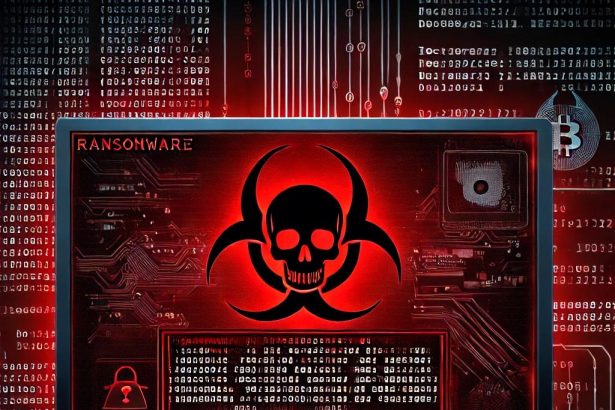A recent incident revealed how Dire Wolf infiltrated a mid-sized enterprise via a malicious email attachment, encrypting critical documents in under ten minutes and threatening to leak stolen data unless a hefty ransom was paid. In this case, failure to act swiftly left IT teams scrambling to contain the breach before further files on shared drives were encrypted.
Threat Overview
Dire Wolf is a crypto-ransomware strain that locks victims’ files using strong encryption, appending the .direwolfextension and dropping a ransom note named HowToRecoveryFiles.txt. It extorts victims by stealing data and promising public disclosure if contact isn’t made within three days. Detection engines flag it under names such as Win64:Malware-gen and A Variant Of WinGo/Filecoder.JB.
In-Depth Analysis
Infection Vector
Dire Wolf most commonly arrives via phishing emails bearing malicious attachments, often disguised as invoices or shipping notices. It may also piggyback on pirated software, bogus technical-support scams, torrent downloads, and drive-by malvertising campaigns.
Behavioral Profile
- Execution & Persistence: Once the user launches the executable, Dire Wolf establishes persistence by creating registry keys and scheduling tasks to survive reboots.
- Encryption Process: It encrypts files across local and mapped network drives, appending
.direwolfto filenames and leaving originals inaccessible. - Ransom Note Deployment: Simultaneously, it creates HowToRecoveryFiles.txt on the desktop, instructing victims to connect via a Tor-based live chat for payment details.
Risk Assessment
What happens if files become encrypted? Victims face total data loss or forced payment—often around $500,000 per case—without any guarantee of decryption. Worse yet, stolen data may be auctioned or publicly disclosed after 30 days, compounding the breach’s legal and reputational fallout. Given its sophisticated encryption and data-exfiltration capabilities, Dire Wolf poses a severe threat to enterprises lacking robust backups and network segmentation.
Artifact Text
markdownCopyEditDear Mr or Ms,
If you are reading this message, it means that:
- your network infrastructure has been compromised
- critical data was leaked
- files are encrypted
----------------------------------------------------
The best and only thing you can do is to contact us
to settle the matter before any losses occurs.
----------------------------------------------------
We can maintain confidentiality for 3 days for you...
Manual Ransomware Removal Process
Important: Manual removal is recommended only for experienced users, as incorrect actions can lead to data loss or incomplete removal of the ransomware. If unsure, consider the SpyHunter Removal Method for a guided, automated solution.
Step 1: Disconnect from the Internet
- Immediately disable Wi-Fi or unplug the Ethernet cable to prevent the ransomware from communicating with remote servers.
- This can prevent additional encryption or further infections.
Step 2: Boot into Safe Mode
For Windows Users
- Windows 10/11:
- Press Windows + R, type
msconfig, and press Enter. - Under the Boot tab, select Safe boot and check Network.
- Click Apply, then OK, and restart your PC.
- Press Windows + R, type
- Windows 7/8:
- Restart your PC and press F8 repeatedly before Windows starts.
- Select Safe Mode with Networking and press Enter.
For Mac Users
- Restart your Mac and hold the Shift key immediately after the startup chime.
- Release the key when the Apple logo appears.
- Your Mac will boot in Safe Mode.
Step 3: Identify and Terminate Malicious Processes
Windows
- Open Task Manager by pressing Ctrl + Shift + Esc.
- Look for unusual processes consuming high CPU or memory.
- Right-click on the suspicious process and select End Task.
Mac
- Open Activity Monitor (Finder > Applications > Utilities > Activity Monitor).
- Look for unknown or high-resource-consuming processes.
- Select the suspicious process and click Force Quit.
Step 4: Delete Ransomware Files
Windows
- Open File Explorer and navigate to:
C:\Users\[Your Username]\AppData\LocalC:\Users\[Your Username]\AppData\RoamingC:\Windows\System32
- Identify and delete suspicious files (randomly named or recently modified items).
- Clear temporary files:
- Press Windows + R, type
%temp%, and hit Enter. - Delete all files in the Temp folder.
- Press Windows + R, type
Mac
- Open Finder and select Go > Go to Folder.
- Type
~/Library/Application Supportand check for unfamiliar files or folders. - Remove unknown
.plistfiles from~/Library/LaunchAgents.
Step 5: Remove Ransomware Entries from Registry or System Settings
Windows
- Press Windows + R, type
regedit, and hit Enter. - Navigate to:
HKEY_CURRENT_USER\SoftwareHKEY_LOCAL_MACHINE\Software
- Identify and delete ransomware-related registry entries.
Mac
- Open System Preferences > Users & Groups.
- Select the Login Items tab and remove any unknown startup programs.
- Check
~/Library/Preferencesfor malicious settings.
Step 6: Restore System Using a Backup or Restore Point
Windows
- Press Windows + R, type
rstrui, and press Enter. - Choose a restore point from before the infection and proceed.
Mac
- Restart your Mac and enter macOS Utilities by holding Command + R.
- Select Restore from Time Machine Backup and restore a safe backup.
Step 7: Attempt to Decrypt Files
- Check No More Ransom (www.nomoreransom.org) for available decryption tools.
- If unavailable, restore files from backups.
Automated Ransomware Removal with SpyHunter
If manual removal is too complex or risky, SpyHunter offers a safer, automated method for detecting and removing ransomware.
Step 1: Download SpyHunter
- Get SpyHunter from the official Enigma Software website.
Step 2: Install SpyHunter
- Open the downloaded file (
SpyHunter-Installer.exeor.dmgfor Mac users). - Follow the installation prompts.
- Launch SpyHunter upon completion.
Step 3: Run a Full System Scan
- Click Start Scan Now to detect malware and ransomware.
- Wait for the scan to complete and review detected threats.
Step 4: Remove Detected Ransomware
- Click Fix Threats to remove identified ransomware components.
- SpyHunter will clean your system automatically.
Step 5: SpyHunter’s Custom Malware HelpDesk
- If ransomware persists, use SpyHunter’s Malware HelpDesk for custom malware fixes.
Step 6: Restore Files
- Use backups stored on external drives or cloud storage.
- If no backup is available, check No More Ransom for decryption tools.
Preventing Future Ransomware Attacks
- Keep backups: Use cloud storage or an external hard drive.
- Install a reliable security tool: SpyHunter offers real-time protection against malware.
- Enable Windows Defender or Mac security features for additional protection.
- Avoid phishing emails and unknown attachments.
- Regularly update Windows, macOS, and installed applications.
Conclusion
Dire Wolf’s blend of file encryption, data theft, and public-leak threats elevates it into the top tier of crypto-ransomware. Early detection—via unique .direwolf extensions or ransom-note names—and immediate isolation of infected devices are critical. Removing the malware with a trusted scanner like SpyHunter and restoring from offline backups remain the best defense against this high-severity threat.




